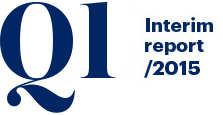
VVO Group plc

VVO Group plc
Investment property refers to an asset (land, building or part of a building), that VVO Group retains to earn rental income or capital appreciation, or both. An investment property can be owned directly or through an entity. Properties used for administrative purposes are owner-occupied property and included in the balance sheet line item Property, plant and equipment. An investment property generates cash flows largely independently of the other assets held by an entity. This distinguishes investment property from owner-occupied property.
Investment property is measured initially at acquisition cost, including related transaction costs, such as transfer taxes and professional fees, as well as capitalized expenditure arising from eligible renovation. The cost also includes related borrowing costs, such as interest costs, and arrangement fees directly attributable to the acquisition or construction of an investment property. The capitalization of borrowing costs is based on the fact that an investment property is a qualifying asset, i.e. an asset that necessarily takes a substantial period of time to get ready for its intended use or sale. Capitalization commences when the the construction of a new building or extension, begins and continues until such time as the asset is substantially ready for its intended use or sale. Capitalisable borrowing costs are either directly attributable costs accrued on the funds borrowed for a construction project, or costs attributable to a construction project.
After initial recognition, investment property is carried at fair value. The resulting gains and losses arising from changes in fair values are recognized in profit or loss as they arise. Fair value gains and losses are presented netted as separate line item in the income statement. According to IFRS13 a fair value refers to the price that would be received to sell an asset or paid to transfer a liability in an orderly transaction between market participants at the measurement date.
Some of the investment property is subject to legislative divestment and usage restrictions. The so-called non-profit restrictions apply to the owning company, and the so-called property-specific restrictions apply to the investment owned. The non-profit restrictions include, among other things, permanent limitations on the company’s operations, distribution of profit, lending and provision of collateral, and the divestment of investments. The property-specific restrictions include the use of apartments, the selection of residents, the setting of rent and divestment of apartments, and they are fixed-term.
VVO’s investment property portfolio incorporates the completed investment property, investment property under construction, rental apartments under major renovation and VVO Group's plot reserve. Group’s property portfolio include properties classified as trading properties as well as properties classified as held for sale, but those are excluded from the balance sheet item “Investment property.” A property is reclassified from “Investment property” under “Trading properties” in the event of a change in the use of the property, and under “Investment property held for sale”, when the sale of an investment property is deemed highly probable.
An investment property is derecognised on disposal or when the investment property is permanently withdrawn from use and no future economic benefits are expected from its disposal. Gains and losses on disposals are presented netted as a separate line item in the income statement.